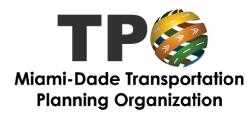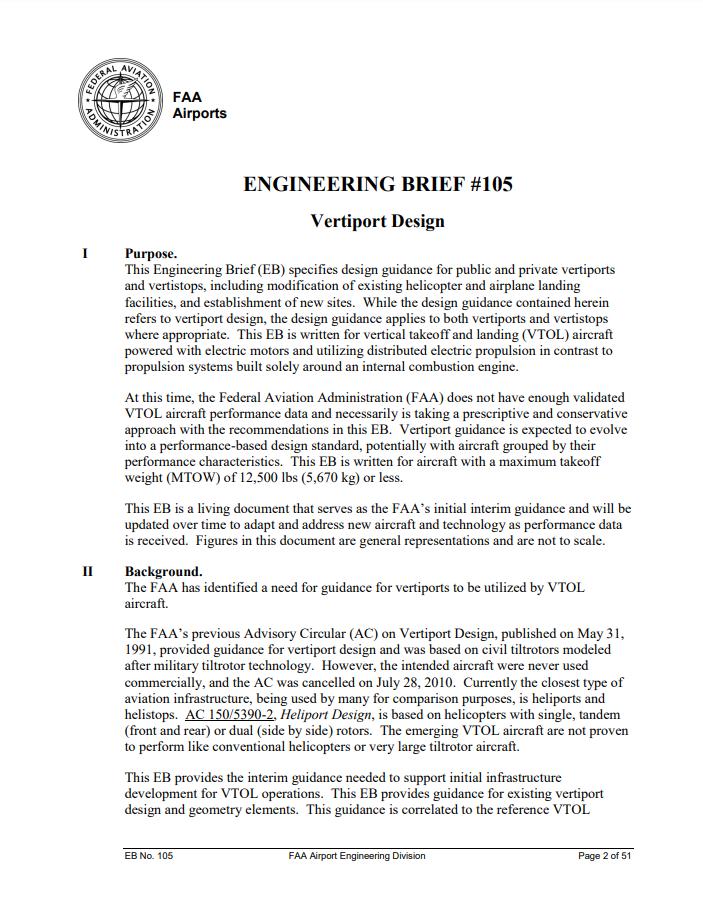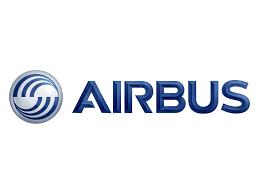6, 2023





 Aileen Bouclé, AICP, Executive Director Miami-Dade
Aileen Bouclé, AICP, Executive Director Miami-Dade

6, 2023





 Aileen Bouclé, AICP, Executive Director Miami-Dade
Aileen Bouclé, AICP, Executive Director Miami-Dade





US Sponsored:
• NASA AAM National Campaign
• Agility Prime
UK Future Flight Challenge
Paris ’24 Olympics
Seletar Aerospace Park
Provided by:
Invest Victoria
‘25 Osaka-Kansai Expo
K-UAM Grand Challenge



Evaluate UAM technology to understand potential markets and impacts to existing transportation systems, environmental sustainability, and economic vitality.
Identify infrastructure needs to accommodate an UAM ecosystem in Miami-Dade County.


Assess policies and recommendations needed to prepare and integrate UAM into Miami-Dade County’s existing transportation network.


Delegation visited Boston and four European Nations.
The peer exchange provided the delegation to see first-hand, innovative opportunities to advance and accelerate the implementation of the SMART Program for the Southeast Florida region.







Munich
• Urban Air Mobility (UAM) project review at the Lilium


GmbH Manufacturing and Testing Facility, Wessling , Germany
Madrid
• Meeting with Agencia Estatal De Seguridad Aerea
(AESA) regarding UAM policy framework and legislative efforts
• Meeting with Globalvia regarding transport infrastructure and mobility solutions
London
• Meeting with Eve Air Mobility regarding UAM policy framework and public outreach





TPO Resolution #24-2022

RESOLUTION APPROVING THE SCOPE OF SERVICES AND BUDGET TO EVALUATE THE CONCEPT OF URBAN AIR MOBILITY

TECHNOLOGY AND ASSESS POLICY FRAMEWORK REQUIREMENTS FOR THE INTEGRATION OF SAID TECHNOLOGY INTO MIAMI-DADE COUNTY’S EXISTING TRANSPORTATION NETWORK

EU –

U-space Concept of Operation

FAA – Concept of Operations of UAM

NASA – Near-term UAM use cases in the DFW area

Florida DOT - AAM Planning and other studies

Los Angeles DOT - UAM Framework Study
Ohio DOT - AAM Framework Study

Texas DOT - Report and Recommendations of UAM Advisory Committee
City of Orlando – UAM Overview





Vertical takeoff and landing (VTOL) aircraft

Aircraft capable of vertical climbs and/or descents and for takeoff and landings.

Vertiport
Dedicated areas for the landing/takeoff of VTOL aircraft.
Energy Infrastructure
Charging stations, electrical grid capacity, and hydrogen infrastructure are critical components of an UAM network.


Safety and Security

Vertiport design, operational safety, cybersecurity, and compatible land use are critical considerations.
Airspace

Initial VTOL operations will utilize existing helicopter routes and air traffic control (ATC) services. NASA and the FAA are developing airspace management technologies to provide routine airspace access for UAM operations.

FAA Engineering Brief 105

• Interim guidance on vertiports

• Vertiport design and geometry


• Charging infrastructure

• On-airport vertiport siting requirements

• Site safety considerations
UAM Infrastructure Challenges
• Battery technology and energy grid capacity
• Vertiport location (airspace, connectivity, equitable)
• Noise and environmental considerations
• Safety and security
Network Infrastructure














Our unrivalled partnerships with vehicle manufacturers ensures our vertiports are designed and located according to manufacturers and operators’ needs and requirements.






NON-EXHAUSTIVE

VEHICLE SPECIFICATIONS CHARGING/FUEL REQUIREMENTS SPECIAL CONDITIONS












PASSENGER EXPERIENCE
TARGET MARKETS
ROUTING
Our investors:







Skyports builds, owns, and operates vertiports. Vertiports are dedicated landing areas in urban environments for electric air taxis and cargo drones.

Our investors:





The main features of a vehicle-agnostic passenger vertiport are landing areas, aircraft stands, recharging and turnaround equipment, passenger terminal, control room and safety and security facilities.

INDEPENDENT FINAL APPROACH AND TAKE-OFF AREAS (FATOs)












HIGH-CAPACITY AIRFIELD WITH BYPASS TAXIWAY

STANDS W/ RECHARGING & TURNAROUND EQUIPMENT

BATTERY ENERGY STORAGE SYSTEM (BESS)

State of Technology
PASSENGER
TERMINAL & CONTROL ROOM
PICK-UP / DROP-OFF AREA








Skyports works with aircraft operators, asset owners, and local stakeholders to establish a transportation network optimized for efficiency and convenience. Our approach considers the needs of the customer and the community, enabling us to identify the best vertiport sites.


State of Technology
Skyports uses its airport planning, airspace, regulatory, and operations expertise to design and build vertiports which capture industry best practices and aircraft performance requirements. Working with authorities and communities, we obtain necessary permits and permissions before deploying each vertiport




Skyports implements the processes and procedures that allow vertiports to function safely and efficiently. We process passengers and cargo through the terminal, support aircraft on the ground, and ensure a safe operating environment for landing and takeoff.
 NETWORK & SITE PLANNING DESIGN & DEVELOPMENT
VERTIPORT SYSTEMS & OPERATIONS
NETWORK & SITE PLANNING DESIGN & DEVELOPMENT
VERTIPORT SYSTEMS & OPERATIONS



Federal Agencies


NASA: Public-private engagement/research

FAA: Aircraft certification, infrastructure & airspace


Federal & State Legislators
Policy development to enable and regulate UAM industry
Local Governments
OEMs

Shared Responsibility
Land use planning and zoning; Community involvement

Aircraft and market development while ensuring the safety of the general public
Public engagement to improve perception of UAM


Miami-Dade County
Office of the Mayor
Miami-Dade County
Miami-Dade County Agencies
Miami-Dade County Municipalities
Neighboring Counties / Agencies
Miami-Dade TPO

Aviation Department
Transportation and Public Works
Fire Rescue / Police
Emergency Management
Regulatory and Economic Resources
Parks, Recreation and Open Spaces
Public Housing and Community Dev.
Water and Sewer
Industry / Trade Organizations


Universities / Educational Institutions
Private Industry OEMs
Infrastructure Providers
Technology Providers
Private Utility Providers Investors
Other Services (Air Traffic Control, Medical Transport, Data Collection)
State Agencies
FDOT

DEP
Emergency Management
Federal Agencies
FAA
NASA
USDOT

• Airspace


• Land Use & Zoning

• Social Equity
• Noise & Visual Pollution
• Infrastructure & Electrical Grid

• Safety & Security
• Funding
• UAM Operators
• Vertiport Infrastructure

• Charging/Fueling
• Data Usage & Management
Government: FAA Lead Agency
• State/Regional/Local/MPO: Pilot Projects/Funding/First/Last Mile network/LRTP

• *Potential for public engagement
• Facilitate incentive program for integrated equitable network
• Promote economic development
• Proof of Concept
Private Sector
• Technology
Development/Identify infrastructure gaps for UAM integration
• Standardized infrastructure to support various aircraft types: electric, hybrid, and hydrogenpowered
• Development of designated UAM testing areas and facilities
• Proof of Concept
Public/Private Collaboration

• Statewide framework for Concept of Operations

• Identify additional partnerships in critical path to AAM roll-out
• Establish data sharing program with operators, OEMs, and other agencies
• Industry coordination under FAA leadership to develop all criteria and regulations
UAM policy and decision making must be consistent with Miami-Dade County’s transportation goals.

Maximize mobility choices
Increase mobility options
Increase safety & security for all users
Reduce traffic congestion & emergency response times
Support economic vitality
Protect & preserve the environment & quality of life; Promote energy conservation
Improve transportation efficiency of people and goods; Attract private investment
Reduce noise, carbon emissions, and fuel consumption
Enhance integration & connectivity
Enhance connectivity between urban centers and surrounding communities
Improve & preserve the existing system
Enhance existing transportation system while integrating UAM


● Noise/visual pollution


● Air traffic mgmt.

● Battery technology



● Safety/ security
● Utility infrastructure
● Aircraft certification
● Local land use and zoning

● First-/ last-mile transport.
● Regulatory guidance/safety standards
● Federal/state funding eligibility
● Social equity
● Privacy
● Public confidence in technology
● Overall public acceptance

Next Steps




Develop UAM local proof of concept in Miami-Dade County
Incorporate UAM into Miami-Dade TPO transportation planning efforts*

Identify strategic partnerships with government agencies and private organizations in the critical path to UAM integration
Identify initial use cases and operating locations*

Develop and initiate educational outreach programs*
Incorporate UAM into long range transportation plans and comprehensive plans, with emphasis on the SMART Program corridors *
Identify utility needs and grid capacity to support VTOL operations, especially in rural and underserved communities*
Update zoning, land use plans, and building codes to accommodate vertiports, VTOL operations, and other UAM-related infrastructure*
Develop workforce training programs
Develop emergency response procedures and train personnel*
Promote the installation of VTOL charging/fueling infrastructure
Support the deployment of initial UAM services in select locations consistent with the recommendations of MDAD AAM Strategic Plan*
Endorse the review and development of standalone (off-airport) vertiports, charging/fueling facilities, and other UAM infrastructure
Review infrastructure and regulatory requirements for autonomous UAM operations*
Refine county and municipal zoning, land use plans, and building codes to accommodate high-frequency off-airport VTOL operations*
Promote the development of additional UAM infrastructure to support scaled operations and local/regional transportation goals
Integrate UAM services into Miami-Dade County’s public transportation network, with emphasis on the SMART Program corridors
*Implementation priority is consistent with the recommendations of the FDOT AAM Roadmap and/or MDAD AAM Strategic Plan. This timeline represents approximate timeframes in which tasks should be initiated and in which the majority of initial effort should be spent. Ultimately, these recommendations should be continuously reviewed, updated, and prioritized in perpetuity.
• Establish permanent UAM Working Group



• Review implementation priorities and timeline

• Monitor technology advancements and industry updates
• Develop stakeholder coordination plan

• Implement study recommendations, as appropriate
Next Steps









